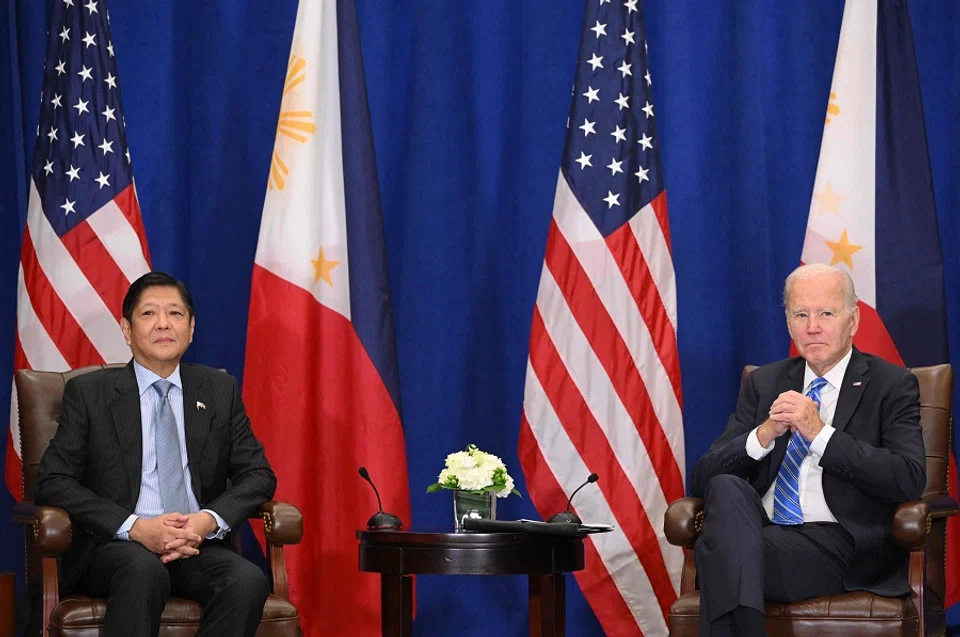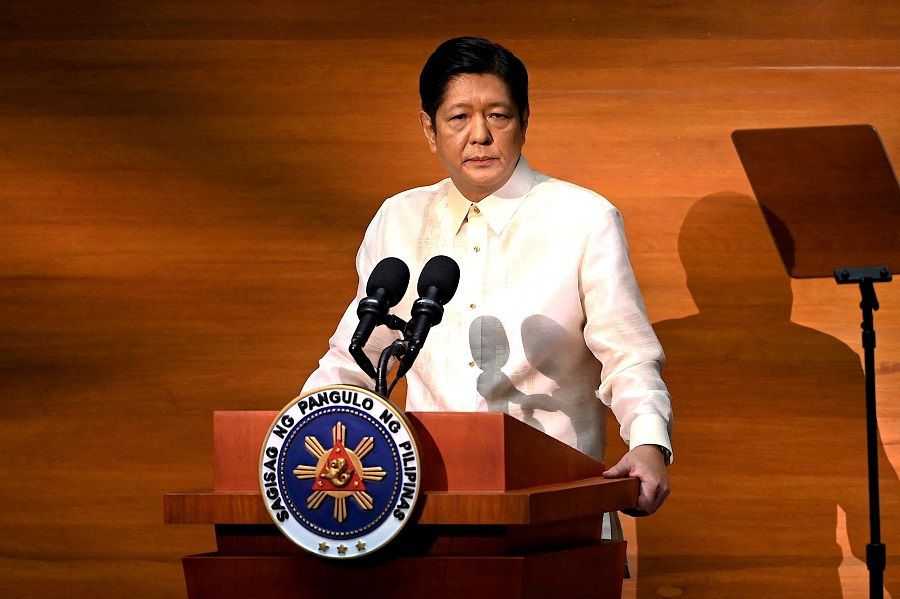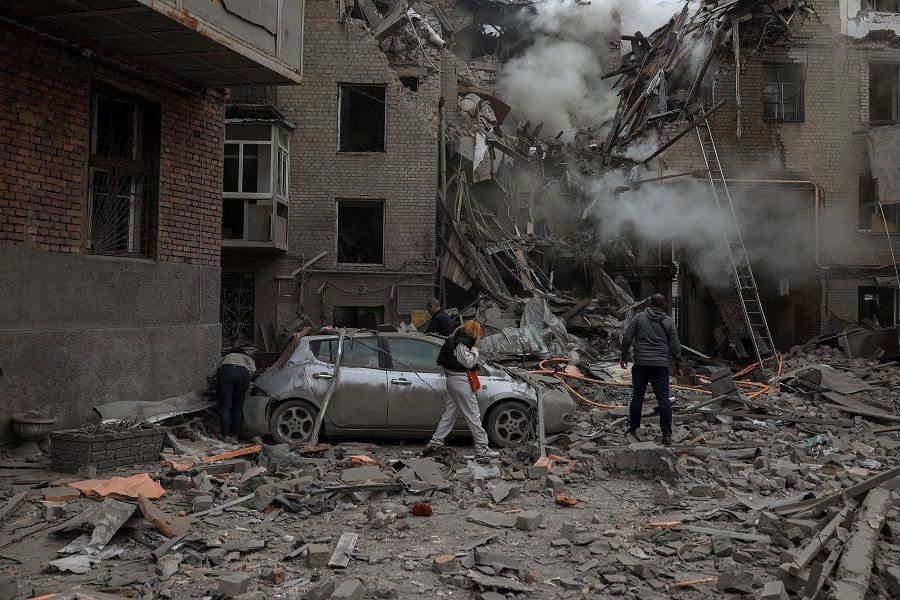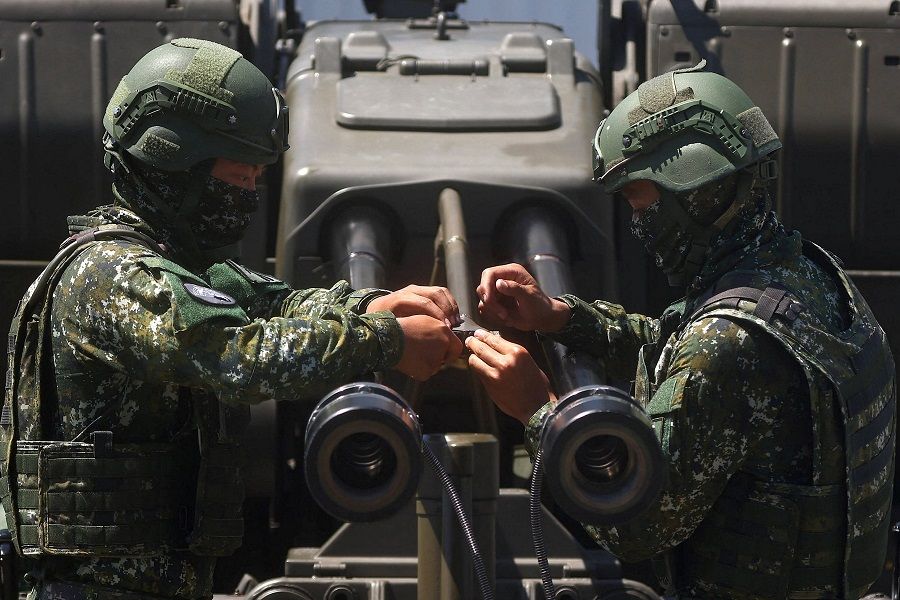Can the Philippines stay neutral in a Taiwan Strait military confrontation between the US and China?

Soon after US House Speaker Nancy Pelosi's visit to Taiwan in early August 2022, US Secretary of State Anthony Blinken met newly elected President Ferdinand "Bong Bong" Marcos Jr in Manila amid the "fourth Taiwan Strait crisis".
Secretary Blinken reaffirmed the US's commitment to the 1951 US-Philippines Mutual Defense Treaty (MDT) and said that the US would work closely with Manila on shared challenges. President Marcos replied: "... we cannot, we can no longer isolate one part of our relationship from the other. We are too closely tied because of the special relationship between the US and the Philippines, and the history that we share."
On Pelosi's visit, President Marcos said, "To be perfectly candid, I did not think it raised the intensity, it just demonstrated... How the intensity of that conflict has been... It actually has been at that level for a good while, but we got used to it and put it aside."
With these words, President Marcos rejected the Chinese account of Pelosi's visit to Taiwan as the primary cause of the crisis by implying that underlying tensions have always been there. According to The State of Southeast Asia 2022 Survey Report by the ISEAS-Yusof Ishak Institute, 82% of Filipino respondents have no or little confidence that China will do the right thing to contribute to global peace, security, prosperity, and governance. Interestingly, it was also observed that 57% of the Filipino respondents are confident in the US as a strategic partner and provider of security in the region.
This marks a clear departure from former President Rodrigo Duterte's initial efforts to distance the Philippines from its formal treaty ally.

Of greater significance is his statement about the importance of Philippine-US relations, as it implies his recognition that the two allies should underscore how extraordinary and important the two countries' bilateral relations are in the face of a perilous and uncertain period in the Indo-Pacific region. This marks a clear departure from former President Rodrigo Duterte's initial efforts to distance the Philippines from its formal treaty ally.
Duterte did this by calling for the immediate withdrawal of American troops from Mindanao, suspending joint Philippine-US military exercises and patrols during his six-year term, and delaying the implementation of construction projects within five Philippine Air Force (PAF) bases as provided for by the 2014 Philippine-US Enhanced Defense Cooperation Agreement (EDCA).
President Marcos, however, implied that while he favours close economic relations with China, he wants balanced and stable Philippine security and diplomatic relations with the US. His efforts to seek these balanced relations between the US and China would have to be conducted amidst growing tensions between Washington and Beijing over the Taiwan Strait.
Restoring the Philippine-US alliance
In the last two years of his term, President Duterte realised the need to revive the Philippine-US alliance given China's unabated moves to tighten its control of the South China Sea, which was marked by increased cases of Chinese fishing, coast guard and naval vessels intruding into the country's exclusive economic zone (EEZ).
On 30 July 2021, President Duterte withdrew the letter for the 1999 Philippine-US Visiting Forces Agreement (VFA) termination process after he met US Defence Secretary Lloyd Austin during the latter's official visit to the Philippines. Lloyd met with his Philippine counterpart at the Pentagon in September 2021 and in November 2021, the Philippine and US defence and foreign affairs officials met in Washington, DC to reinvigorate the alliance. The two countries agreed to resume the construction of US facilities within the five Philippine Air Force (PAF) airbases committed by the Aquino administration in 2016 as EDCA sites.

The two countries' defence departments also agreed to promote their respective armed forces' interoperability through the establishment of a coordination centre, development of joint command and control for operations, and formulation of a maritime framework to enable Filipino and American troops to conduct joint operations more effectively. Finally, the two countries formulated new bilateral defence guidelines in the form of the 16 November 2021 "Joint Vision for a 21st Century United States-Philippines Partnership".
The Russian invasion of Ukraine on 24 February 2022 brought out an underlying fear among many Southeast Asian states that this would encourage China to follow suit in the Taiwan Strait and in the South and East China Seas.
The Russian invasion of Ukraine and its impact on the alliance
The Russian invasion of Ukraine on 24 February 2022 brought out an underlying fear among many Southeast Asian states that this would encourage China to follow suit in the Taiwan Strait and in the South and East China Seas. It dawned on some Southeast Asian states, including the Philippines, that the Russian invasion of Ukraine has a specific implication for Southeast Asia, given converging Sino-Russian views of challenging the US-led rules-based international order and the possibility that Beijing might take a page out of Russia's playbook on using grey zone tactics, conducting hybrid warfare, and applying the use of force to acquire and annex disputed territories.
On 10 March 2022, the Philippine ambassador to Washington, Jose Manuel Romualdez, announced that then President Duterte was ready to open the country's military facilities to American forces if Russia's war against Ukraine turned for the worse and embroiled the US in the war. He specifically stated that the president indicated that in the event of an emergency, the Philippines would allow US forces to return to the former naval station at Subic Bay and the nearby Clark Air Base.

The Duterte administration's sudden gesture of offering the former US military facilities to Washington was seen as unprecedented, given that this administration had been ambivalent, if not cynical, about the Philippines' alliance with the US.
... the Philippines is aware that if a conflict breaks out in the Taiwan Strait, there is a great chance that the country will be affected by refugee flow, the sudden deluge of returning overseas workers, and even the spread of the conflict not only to Philippine territorial waters but also to the northern part of the main island of Luzon...
This raised, however, the question that the Ukraine-Russia war might spread from Eastern Europe to East Asia. Exactly how the war in Europe might affect East Asia is unclear. What is apparent, however, is that the Philippines is aware that if a conflict breaks out in the Taiwan Strait, there is a great chance that the country will be affected by refugee flow, the sudden deluge of returning overseas workers, and even the spread of the conflict not only to Philippine territorial waters but also to the northern part of the main island of Luzon, specifically in the Bashi Channel, the narrow waterway between the Y'Ami Island of the Philippines and the Orchid Island of Taiwan. This is a part of the Luzon Strait in the Pacific Ocean that is an important passage for the conduct of military operations on the eastern coast of Taiwan.

On 31 March 2022, the Philippines and the US held an unusually large joint military exercise considering the perceived growing threat from China and both countries' wariness of China as Russia's security partner. The military exercise included conventional war-fighting scenarios such as amphibious landings, airstrikes, and ship movements aimed at enhancing the two allies' crisis planning and crisis response capability.
... given its lack of credible military capability, the Philippines will have limited choice but to rely on the credibility of the US security umbrella, particularly through its longstanding Mutual Defense Treaty (MDT) with the US.
Is neutrality an option?
In the face of rising tensions during the fourth Taiwan Strait Crisis, Philippine national security adviser Clarita Carlos argued that the Philippines should stay neutral in the face of a possible US-China armed stand-off in the Taiwan Strait. Such a position might not be tenable during an actual US-China armed clash over Taiwan for two reasons. First, neutrality during armed conflict can only be effective if it is a case of armed neutrality. Unfortunately, the Armed Forces of the Philippines (AFP) lacks modern naval vessels and advanced fighter planes to mount a credible defence of the country's vast maritime territory if any of the belligerents violates the country's neutrality.

Second, on the one hand, given its lack of credible military capability, the Philippines will have limited choice but to rely on the credibility of the US security umbrella, particularly through its longstanding Mutual Defense Treaty (MDT) with the US. On the other hand, given the Philippines' proximity to Taiwan, the US would have to rely on the Philippines for access if it mounts a military response against a major Chinese armed attack on Taiwan. At the end of the day, the Philippines will take its lead from the strategic prudence of its new president's statement during his meeting with Blinken, that the volatile situation "just points to the fact of the importance of the relationship between the United States and the Republic of the Philippines".
Related: Mind the gaps, fill the needs: A strategic outlook for the Philippine-US alliance | Can the next Philippine president stand up to Chinese pressure in the South China Sea? | Philippine-US cooperation on Whitsun Reef: A 'win' for the Biden team in Southeast Asia? | The 'one China' policy of Southeast Asian countries | While preserving good relations with China, the Philippines must exercise its maritime rights | The Philippines' termination of the Visiting Forces Agreement: A win for China and Russia
